
Jules Sébastien César Dumont d'Urville was a French explorer and naval officer who explored the south and western Pacific, Australia, New Zealand, and Antarctica. As a botanist and cartographer, he gave his name to several seaweeds, plants and shrubs, and places such as d'Urville Island in New Zealand.
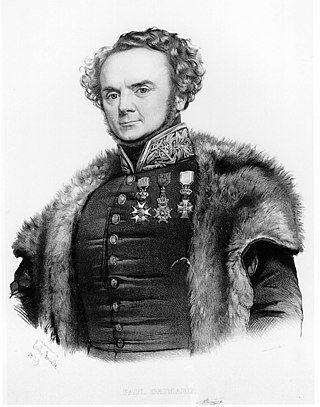
Joseph Paul Gaimard was a French naval surgeon and naturalist.

Joseph Toussaint Reinaud was a French orientalist.
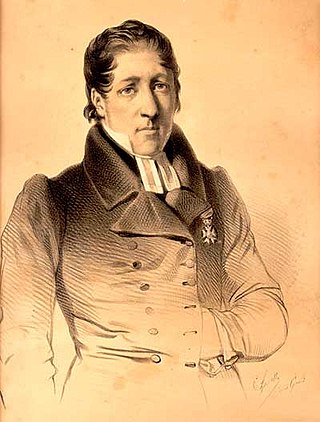
Lars Levi Laestadius was a Swedish Sami writer, ecologist, mythologist, and ethnographer as well as a pastor and administrator of the Swedish state Lutheran church in Lapland who founded the Laestadian pietist revival movement to help his largely Sami congregations, who were being ravaged by alcoholism. Laestadius himself became a teetotaller in the 1840s, when he began successfully talking his Sami parishioners out of alcoholism. Laestadius was also a noted botanist and an author.

Jean-Baptiste Geneviève Marcellin Bory de Saint-Vincent was a French naturalist, officer and politician. He was born on 6 July 1778 in Agen (Lot-et-Garonne) and died on 22 December 1846 in Paris. Biologist and geographer, he was particularly interested in volcanology, systematics and botany. The standard author abbreviation Bory is used to indicate this person as the author when citing a botanical name.
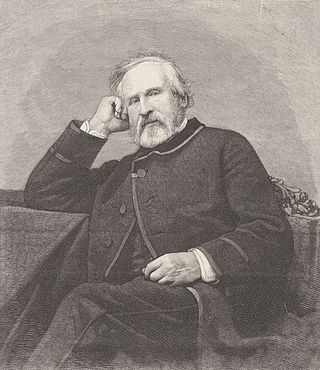
François-Auguste Biard, born François Thérèse Biard was a French painter, known for his adventurous travels and the works depicting his experiences.
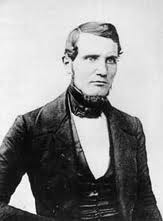
Joseph Marie Élisabeth Durocher was a French geologist.
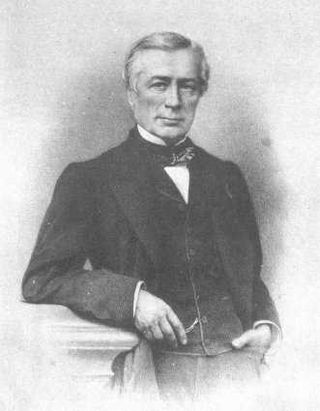
Xavier Marmier was a French author born in Pontarlier, in Doubs. He had a passion for travelling, and this he combined throughout his life with the production of literature. After journeying in Switzerland, Belgium and the Netherlands, he was attached in 1835 to the Arctic expedition of the Recherche; and after a couple of years at Rennes as professor of foreign literature, he visited (1842) Russia, (1845) Syria, (1846) Algeria, (1848–1849) North America and South America, and numerous volumes from his pen were the result.

Dakoro is a town and commune located in the Maradi Region of Niger. As of 2012, it had a population of 71,201. It is the capital of the Dakoro Department.

Faroese literature, in the traditional sense of the word, has only really developed in the past two hundred years. This is mainly because of the islands' isolation, and also because the Faroese language was not written down in a standardised format until 1890. Until then the Danish language was encouraged at the expense of Faroese. Nevertheless, the Faroese language soon became a vehicle for literature in its own right and has produced writers in several genres.
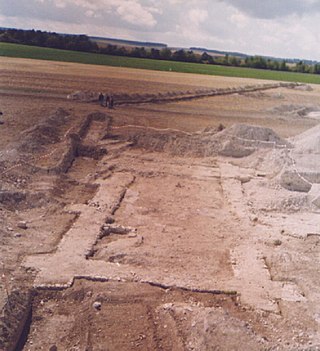
Payns is a commune in the Aube department in north-central France.
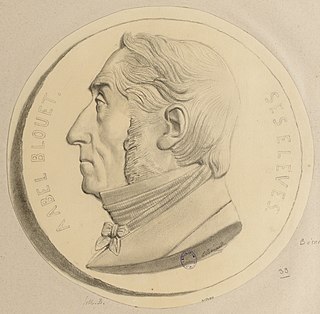
Guillaume-Abel Blouet was a French architect who specialised in prison design.

Fragments of Lappish Mythology is the detailed documented account of the Sami religious beliefs and mythology during the mid-19th century. It was written between 1838 and 1845 by Swedish minister Lars Levi Laestadius, but was not published until 1997 in Swedish, 2000 in Finnish, and 2002 in English. The book was originally written for the French-funded La Recherche Expedition of 1838–1840, but was lost and forgotten for many decades thereafter.
Fulgence Fresnel ( FRAYN-, FREN-el, -əl or fray-NEL; French:[fylʒɑ̃sfʁɛnɛl]; was a French Orientalist. He was brother to the noted physicist Augustin Fresnel. Fresnel was an Orientalist scholar who led one of the first archaeological teams to excavate in Mesopotamia.
Édouard Constant Biot was a French engineer and Sinologist. As an engineer, he participated in the construction of the second line of French railway between Lyon and St Etienne, and as a Sinologist, published a large body of work, the result of a "knowledge rarely combined."
Jean-Baptiste Benoît Eyriès was a French geographer, author and translator, best remembered in the English speaking world for his translation of German ghost stories Fantasmagoriana, published anonymously in 1812, which inspired Mary Shelley and John William Polidori to write Frankenstein and The Vampyre respectively. He was one of the founding members of the Société de Géographie, a member of the Société Asiatique, Académie des Inscriptions et Belles-Lettres, American Philosophical Society, and American Academy of Arts and Sciences, and was awarded the Legion of Honour. He had a mountain named after him near Yos Sudarso Bay in New Guinea, as well as a sandbank near French Island, Australia, and a street in Le Havre.
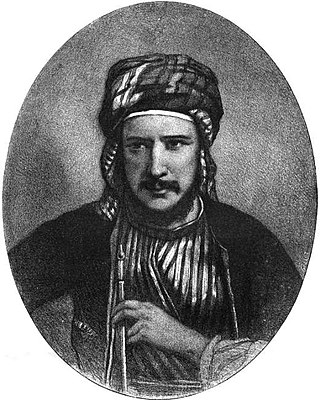
Pierre Henri Stanislas d'Escayrac de Lauture, count then marquis of Escayrac, Commandeur of the Légion d'honneur was a French explorer, geographer, diplomat and linguist.

Léonie Thévenot d'Aunet was a French author, novelist, playwright and Arctic explorer.
Microcotyle erythrini is a species of monogenean, parasitic on the gills of a marine fish. It belongs to the family Microcotylidae. This species was described by Van Beneden & Hesse in 1863 and redescribed by Parona & Perugia in 1890.
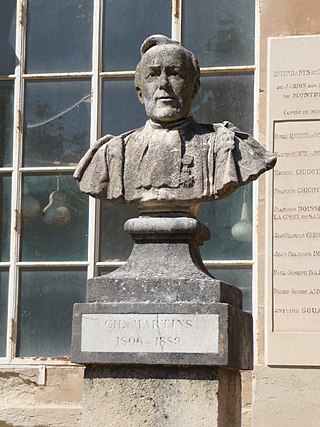
Charles Frédéric Martins (1806–1889) was a French physician, botanist, geologist, naturalist, and translator.















